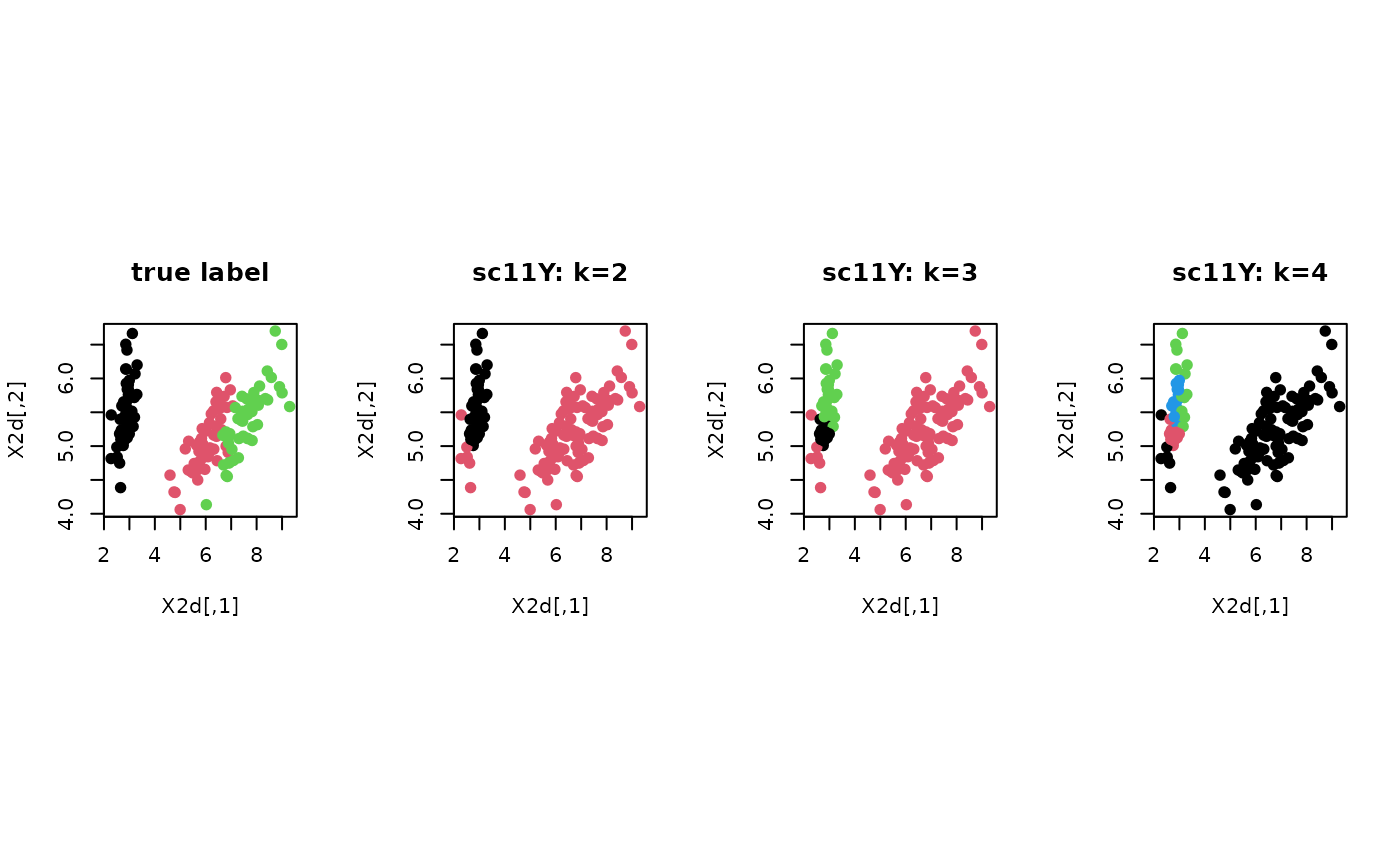As a data-driven method, the algorithm recovers geodesic distance from a k-nearest neighbor graph scaled by an (exponential) parameter \(\rho\) and applies random-walk spectral clustering. Authors referred their method as density sensitive similarity function.
sc11Y(data, k = 2, nnbd = 7, rho = 2, ...)
Arguments
| data | an \((n\times p)\) matrix of row-stacked observations or S3 |
|---|---|
| k | the number of clusters (default: 2). |
| nnbd | neighborhood size to define data-driven bandwidth parameter (default: 7). |
| rho | exponent scaling parameter (default: 2). |
| ... | extra parameters including
|
Value
a named list of S3 class T4cluster containing
- cluster
a length-\(n\) vector of class labels (from \(1:k\)).
- eigval
eigenvalues of the graph laplacian's spectral decomposition.
- embeds
an \((n\times k)\) low-dimensional embedding.
- algorithm
name of the algorithm.
References
Yang P, Zhu Q, Huang B (2011). “Spectral Clustering with Density Sensitive Similarity Function.” Knowledge-Based Systems, 24(5), 621--628. ISSN 09507051.
Examples
# ------------------------------------------------------------- # clustering with 'iris' dataset # ------------------------------------------------------------- ## PREPARE data(iris) X = as.matrix(iris[,1:4]) lab = as.integer(as.factor(iris[,5])) ## EMBEDDING WITH PCA X2d = Rdimtools::do.pca(X, ndim=2)$Y ## CLUSTERING WITH DIFFERENT K VALUES cl2 = sc11Y(X, k=2)$cluster cl3 = sc11Y(X, k=3)$cluster cl4 = sc11Y(X, k=4)$cluster ## VISUALIZATION opar <- par(no.readonly=TRUE) par(mfrow=c(1,4), pty="s") plot(X2d, col=lab, pch=19, main="true label") plot(X2d, col=cl2, pch=19, main="sc11Y: k=2") plot(X2d, col=cl3, pch=19, main="sc11Y: k=3") plot(X2d, col=cl4, pch=19, main="sc11Y: k=4")
